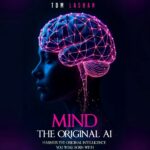New York City, a global metropolis known for its cultural vibrancy, faces a unique opportunity to harness the power of culture as a driving force for economic and social revitalization. In the post-pandemic landscape, where cities worldwide are grappling with recovery, New York’s rich cultural tapestry presents an unparalleled asset. By strategically leveraging this cultural wealth, the city can stimulate job creation, foster community cohesion, and position itself as a leader in the global creative economy.
Economic Impact: Fueling Growth Through Culture
The economic benefits of cultural industries are vast and multifaceted. In New York, the arts and culture sector is not just a source of entertainment but a significant employer, contributing billions to the local economy. The growth in creative industries, from film and music to design and architecture, has the potential to create thousands of jobs, particularly in neighborhoods that have been economically marginalized.
Moreover, cultural districts and creative hubs can attract significant investment. These areas become magnets for businesses, from tech startups to hospitality ventures, looking to capitalize on the vibrant atmosphere that culture fosters. Public-private partnerships play a crucial role here, providing the financial and infrastructural support needed to sustain these cultural ecosystems.
Tourism, a cornerstone of New York’s economy, also stands to benefit from cultural revitalization. Festivals, public art installations, and cultural events draw millions of visitors annually, injecting much-needed revenue into the city’s hospitality and retail sectors. This influx of tourists not only supports local businesses but also creates a ripple effect, boosting employment and fostering urban development.
Social and Community Benefits: Building Identity and Cohesion
Beyond economics, culture plays a pivotal role in shaping community identity and fostering social cohesion. Cultural projects that engage local communities help preserve the unique identities of neighborhoods while empowering residents to take pride in their heritage. These initiatives often bring together diverse groups, reducing social tensions and fostering a sense of belonging.
Education is another critical area where culture can have a transformative impact. Cultural education programs in schools expose young people to the arts, fostering creativity and critical thinking. Moreover, opportunities for lifelong learning in arts and culture help adults stay engaged and connected, promoting mental well-being and social interaction.
Urban Development: Revitalizing Spaces and Preventing Displacement
Urban development and culture are intrinsically linked. Revitalizing public spaces through cultural projects—such as murals, art installations, and performance spaces—can breathe new life into underutilized areas. These transformations not only beautify the city but also make it more accessible and enjoyable for residents and visitors alike.
However, cultural revitalization must be carefully managed to avoid gentrification and displacement. While cultural projects can increase property values and attract investment, they can also price out long-term residents. Therefore, it is crucial to balance cultural development with affordable housing initiatives, ensuring that the benefits of revitalization are shared equitably.
Infrastructure development is another key consideration. Investment in cultural infrastructure—such as theaters, museums, and galleries—creates permanent cultural landmarks that can drive sustained economic growth. Additionally, improving transportation links to these cultural hubs ensures that they are accessible to all New Yorkers, not just those in affluent neighborhoods.
Cultural Innovation: Embracing Technology and Entrepreneurship
In the digital age, the intersection of culture and technology offers new opportunities for innovation. Supporting creative entrepreneurs through grants, incubators, and co-working spaces can stimulate the growth of cultural startups, driving economic diversity and resilience.
Technology also plays a significant role in cultural experiences. From virtual reality in museums to AI-driven art, integrating tech into culture can attract a new generation of audiences while enhancing the reach and impact of cultural programs. Moreover, promoting digital art forms and virtual events allows New York to maintain its cultural leadership on the global stage.
Policy and Governance: Creating a Supportive Framework
To fully realize the potential of culture as a revitalization tool, supportive policies and governance structures are essential. City-level policies that integrate arts and culture into urban planning can ensure that cultural considerations are at the forefront of development decisions. Public funding mechanisms, combined with philanthropic and private sector support, provide the financial backbone needed to sustain cultural initiatives.
Public-private partnerships are particularly effective in this context, bringing together government, businesses, and cultural organizations to collaborate on large-scale projects. These partnerships not only pool resources but also align the interests of different stakeholders, creating a shared vision for the city’s cultural future.
Sustainability and Long-Term Impact: Ensuring Lasting Benefits
As New York embarks on cultural revitalization, sustainability must be a core consideration. This includes environmental sustainability, such as adopting green practices in cultural institutions, and ensuring that cultural projects have enduring benefits for the community.
Long-term cultural strategies are essential to maintaining the momentum of revitalization efforts. This involves continuous funding, support for cultural institutions, and ongoing evaluation of the impact of cultural projects. By adopting a data-driven approach, New York can ensure that its cultural investments yield measurable benefits in terms of economic growth, social cohesion, and urban development.
A Cultural Renaissance for New York
New York City stands at the cusp of a cultural renaissance that can drive its recovery and growth in the coming decades. By strategically leveraging its cultural assets, the city can create jobs, strengthen communities, and position itself as a global leader in the creative economy. However, achieving this vision requires a concerted effort from all stakeholders—government, businesses, and the community—to ensure that the benefits of cultural revitalization are felt by all New Yorkers.
As the city continues to navigate the challenges of the post-pandemic era, culture will undoubtedly play a central role in shaping a more vibrant, equitable, and prosperous future.
















